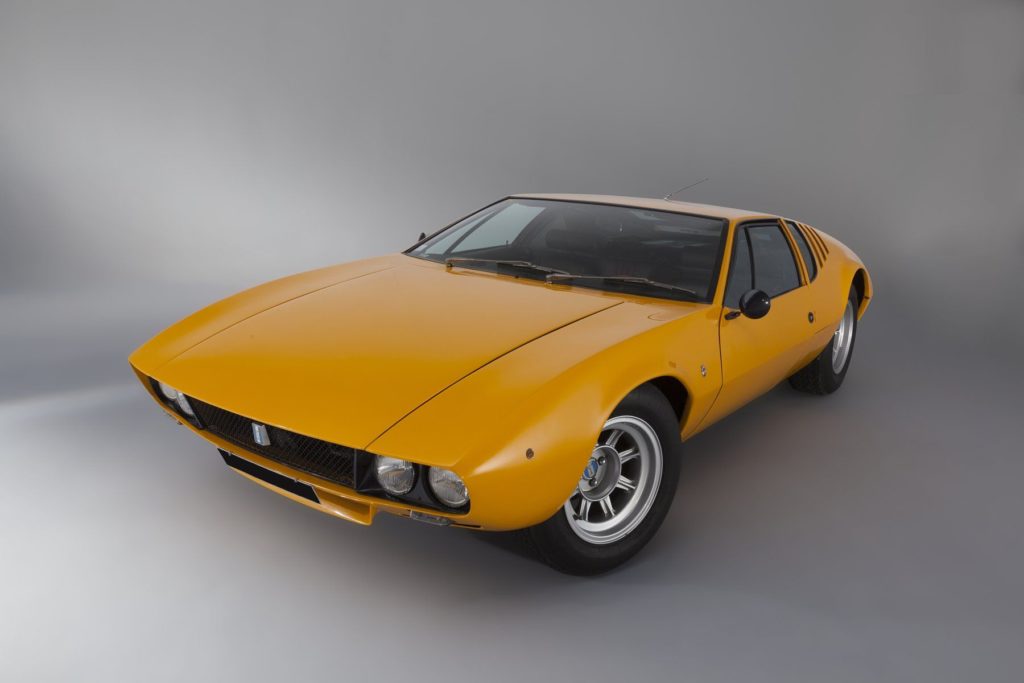
The De Tomaso Mangusta, a pivotal piece of automotive history, emerged from the visionary endeavors of Alejandro de Tomaso and his ambitious pursuit of excellence for the small Modena-based company. This Italian masterpiece, produced by De Tomaso from 1967 to 1971, traces its roots back to the influential De Tomaso P70 project in 1965, a venture that held the promise of transforming the company’s trajectory.
The origin of the DeTomaso Mangusta
Before the P70, De Tomaso had gained recognition for crafting a limited number of competition cars and approximately fifty Vallelunga coupés, each equipped with Ford engines generating around a hundred horsepower. The company, under Alejandro de Tomaso’s leadership, aspired for a significant leap forward in both quality and prominence. The P70 project, a collaboration with Carroll Shelby in 1964, represented this ambitious endeavor.
Initially intended for the 1966 Can-Am, Shelby backed the P-70 race car. Alejandro de Tomaso, in conjunction with a collaborative team sent by Shelby, was tasked with developing and building five cars. However, faced with tight deadlines, De Tomaso couldn’t fulfill the agreement. Around the same time, Carroll Shelby diverted his attention to a contract with Ford for the development of the GT-40 for Le Mans, leading to the cancellation of the P70 project in late 1965. This decision left De Tomaso offended but undeterred.
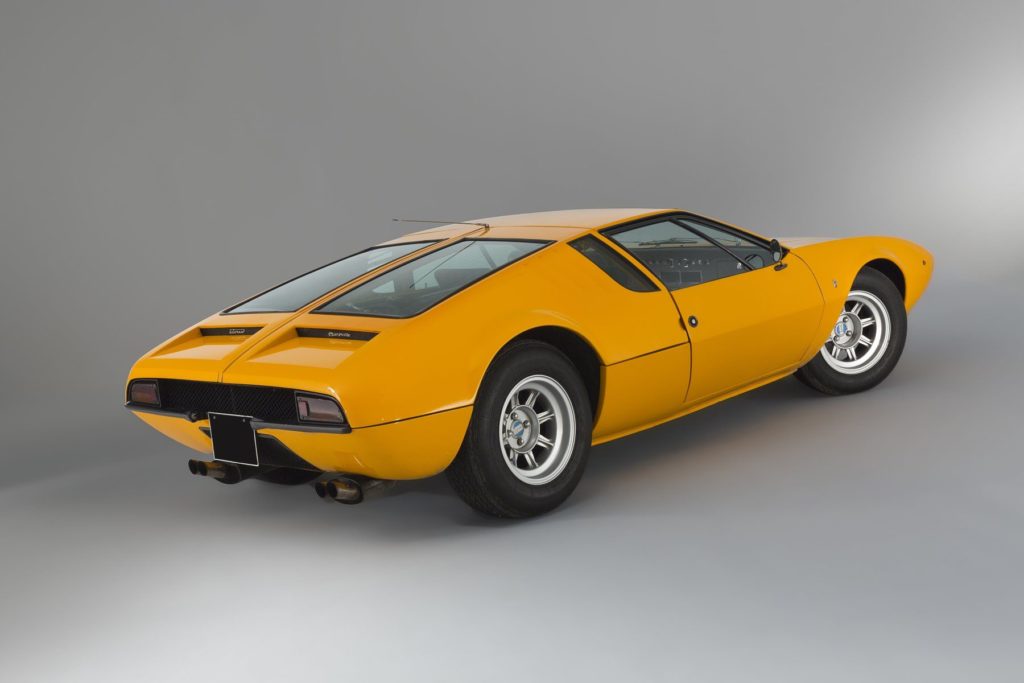
Undeterred, De Tomaso, with the assistance of designer Pete Brock—who remained committed to the project—continued to develop the P70 race car. Ghia was enlisted to craft a body for the single remaining vehicle. In November 1965, this car was showcased at the Turin Motor Show under the name Ghia De Tomaso Sport 5000. Although the P70 never competed in the intended Can-Am series, its existence played a crucial role in the genesis of the De Tomaso Mangusta, leaving an indelible mark on the automotive landscape. This article will delve into the intriguing journey of the Mangusta, unraveling its origins and the transformative impact of the P70 project on the destiny of this iconic Italian automobile.
The Italo-Argentinian racer and constructor, in collaboration with Ghia, unveiled a prototype to the public. Initially presented as a static model and later showcased in motion, this prototype stemmed from the designs of American designer Pete Brock. Brock, employed by the renowned American pilot and preparer Carroll Shelby’s team, contributed to the creation of this innovative project. The Italo-Argentinian visionary hoped that upon completion and demonstration of the car’s technical prowess, it would be acquired by the American team to replace their aging Lang Cooper tubular frame cars. These Lang Cooper vehicles, modified versions of the Cooper Monaco powered by a 4.7-liter Ford engine, had reached the peak of their development, prompting the need for a superior alternative in the North American racing scene.
But it was precisely in 1965 that Shelby became involved with Ford’s GT40 program, which, up to that point, had yielded disappointing results. Shelby devoted himself entirely to this new undertaking, setting aside his own cars and their related development projects. As a result, Alejandro De Tomaso found himself without the primary recipient for his new sports car and was compelled to alter his plans. He decided to shift his focus to road-going sports cars, directly challenging the likes of Ferrari and Lamborghini—brands deeply rooted in the same geographic territory where his small company had originated and grown. The Argentine entrepreneur aimed to capture market share, especially in the affluent United States.
Drawing from the experience gained with the “P70 project,” built on the technical concepts of Vallelunga and its competition derivatives, De Tomaso did not let it go to waste. Instead, he infused it into the Mangusta, a name chosen by the spirited Argentine as a retaliation against Carroll Shelby. The mongoose, capable of combating cobras on equal terms, symbolized the vehicles of the American preparer.
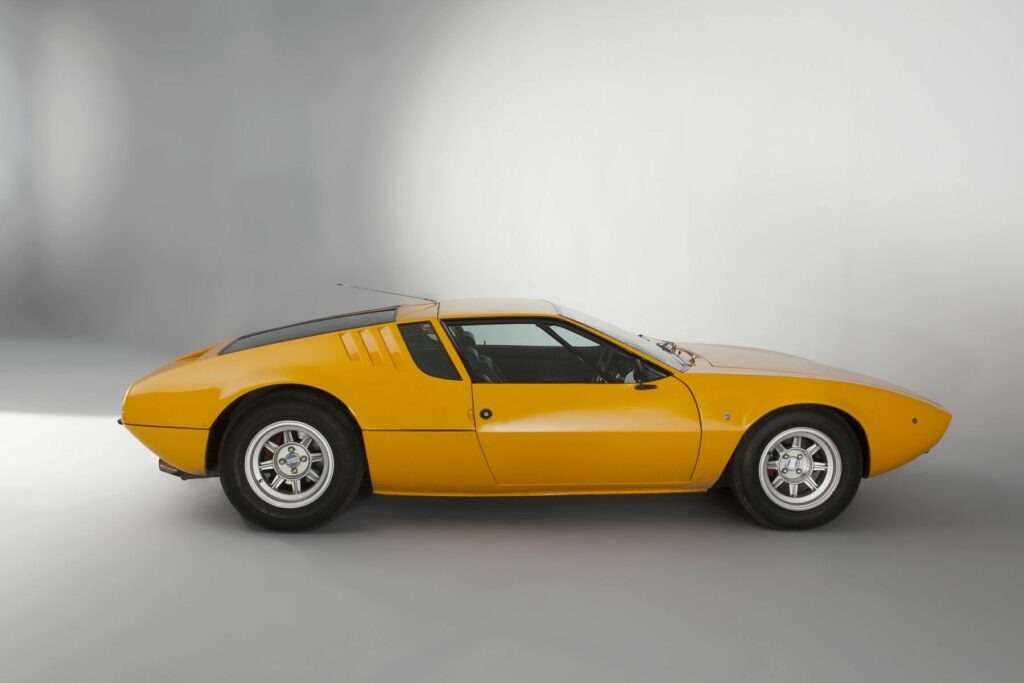
Innovative Chassis Design
In Modena’s vision, the Mangusta’s strength and primary feature were its single-beam aluminum chassis, derived from the Vallelunga designed three years earlier. Essentially the same as the P70/Sport 5000, it featured a mid-rear engine with a semi-supporting function, akin to the competition cars of the seventies. This was an innovative solution for a road-going grand tourer. Complementing the single-beam chassis were independent suspensions on all four wheels, a dual-circuit four-disc braking system, and magnesium wheels supplied by Campagnolo in 7×15″ front and 8×15″ rear sizes.
Similar to the Mangusta’s single-beam chassis, Lotus adopted a comparable solution, but the English automaker did not stress the engine as a structural element. Instead, it delegated the task of supporting the rear suspensions to extensions of the chassis. The Modena-based chassis, paired with a hefty and powerful cast iron Ford V8 engine, covered with a lightweight steel body featuring aluminum hoods and doors, exacerbated the stiffness issues previously encountered with the Vallelunga. It resulted in an unideal weight distribution of the vehicle. Attempting to alleviate this, De Tomaso replaced some components with aluminum castings, but the savings amounted to only 25 kg. To enhance dynamics, he decided to lower the engine. Unable to do so with a dry sump, due to high costs, he reduced the clutch bell diameter by fitting three small-diameter discs instead of the standard large one. However, the weight distribution remained imbalanced at 32% to the front and 68% to the rear, rendering the Mangusta’s driving dynamics uncertain and unpredictable as the adhesion limit approached—not quite reaching the standard set by its top competitors, despite its competitive power-to-weight ratio, which put it in contention with the contemporary Lamborghini Miura.
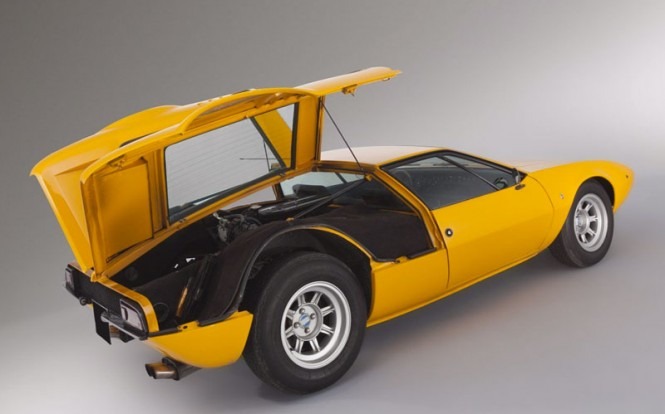
The engine, paired with a somewhat stiff 5-speed gearbox supplied by ZF, was the Ford 289 V8 with a displacement of 4.7 liters, tuned by De Tomaso to reach 306 horsepower. However, for the U.S. market, the significantly less potent Ford 302 V8, a 5-liter engine producing only 220 horsepower, was later installed in the cars. This adjustment aimed to comply with the increasingly stringent emissions regulations imposed by the U.S. federal government during that era.
Unfulfilled Potential and Italian Design Innovation
With Italian design flair, a gullwing hood, aerodynamic and stylish body, four disk brakes, and an overall sportier appearance, the Mangusta was anticipated to deliver exceptional performance, particularly given its superb suspension and mid-engine layout. However, it proved to be underdeveloped. The weight distribution ratio of 32/68 led to front-end lift during cornering, resulting in understeering. Simultaneously, the chassis frame lacked rigidity, occasionally causing oversteering. In summary, the Mangusta was unpredictable, unstable, and challenging to control. Despite its design upgrades, the Mangusta failed to outpace the Cobra, with approximately 500kg more weight and a less powerful engine.
A total of 401 units were produced, with around 150 designated for Europe, 250 for the U.S. market, and a special version equipped with a Corvette engine for Bill Mitchell, General Motors Vice President. The 1970 U.S. models, numbering 50, featured two pop-up headlights.
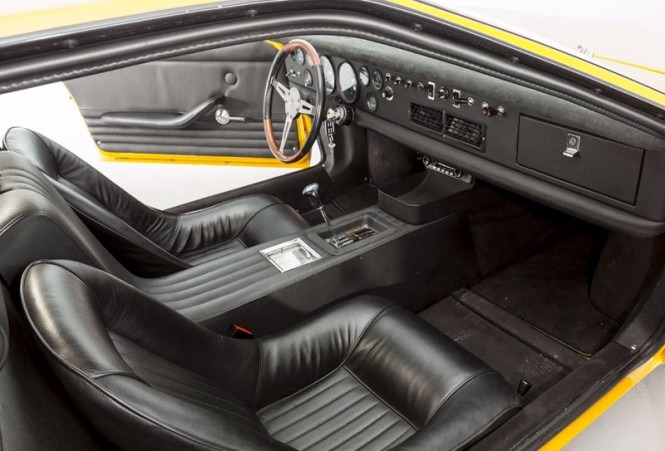
The body was designed by Giorgetto Giugiaro, then the chief designer at Carrozzeria Ghia in Turin. He adapted a previous rejected design for Iso Rivolta, captivating the new client, De Tomaso. The result was an extremely low-profile vehicle (only 1100 mm in height), sacrificing some interior space but achieving the right balance between elegance and aggression. It featured a massive windshield, necessitating the purchase of an air conditioner to alleviate the greenhouse effect in summer, and a split gullwing hood. Giugiaro’s design for the Mangusta incorporated flat elements, anticipating the protruding frame that encloses the grille and headlights, a solution later adopted by other manufacturers. The exterior sophistication contrasted with a particularly Spartan interior, aligning with the concept of a race car suitable for road use promoted by the manufacturer. Notably, for the U.S. market version, Giugiaro addressed the height restrictions imposed by the American Department of Transportation by fitting a single, larger, partially retractable round headlight, ensuring compliance while maintaining a distinctive aesthetic.
Conclusions
In conclusion, the De Tomaso Mangusta, born from Alejandro de Tomaso’s visionary P70 project, stands as a distinctive chapter in automotive history. Despite handling challenges, its Italian design, gullwing hood, and Ford V8 power left a lasting impression.
The Mangusta’s story extends beyond its 1967-1971 production, laying the groundwork for the De Tomaso Pantera. Introduced in the early 1970s, the Pantera refined the Mangusta’s flaws, becoming an iconic model with international success.
The transition from Mangusta to Pantera signifies De Tomaso’s resilience and innovation. Both models contribute to the enduring legacy of Italian sports cars, capturing the spirit of automotive enthusiasts. The Mangusta’s impact persists not only in its own history but also in the continued success and refinement seen in the subsequent Pantera model.

